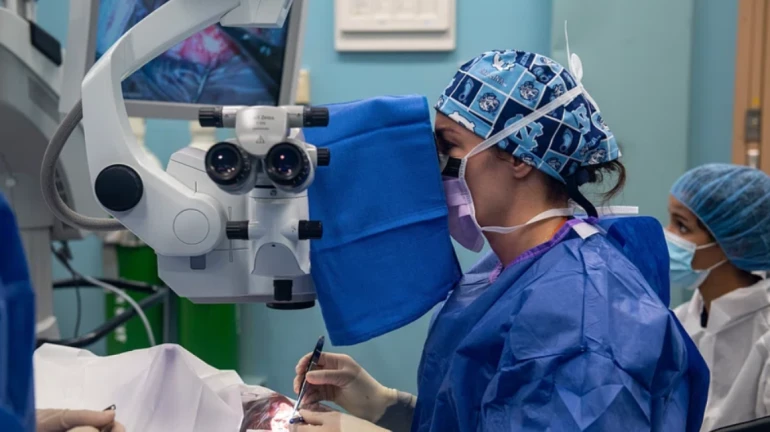
Retinoblastoma, a rare but aggressive form of eye cancer primarily affecting young children, poses a significant threat to their vision and survival. While its global incidence is estimated at around 5,000 cases annually, India paints a concerning picture with an estimated 700-800 new cases reported each year. This translates to roughly 1 in every 16,000 children being diagnosed with the disease in India, says Dr. Divyansh Mishra, Consultant, VR Ocular Oncology & Vitroretinal Service, Sankara Eye Hospital, Navi Mumbai.
Understanding Retinoblastoma: A Fight for Sight
Retinoblastoma arises from uncontrolled cell growth in the retina, the light-sensitive layer at the back of the eye. It can occur in one or both eyes and often develops before a child's fifth birthday. While the exact cause remains unknown, genetic predisposition plays a significant role, with around 40% of cases exhibiting a hereditary link.
Early Detection is crucial
Awareness on Retinoblastoma is low. It can be completely curable, if detected early. Recognizing the signs and symptoms can significantly improve treatment outcomes and potentially save a child's vision and life. Here are some key indicators to watch for:
• Leukocoria: A white or yellow pupil, particularly noticeable in flash photographs, is a classic sign of retinoblastoma.
• Strabismus: One eye turning inwards or outwards.
• Redness or swelling in the eye.
• Poor vision or a wandering eye.
A Mother's Vigilance: A Case of Early Detection
Early intervention can make all the difference, as exemplified by the story of Ananya (name changed), a young girl from Malaysia. Ananya's mother, Priya, noticed a white glow in her daughter's eye during a routine playtime photo session with a flash. Immediately recognizing the potential danger, Priya sought urgent medical attention. Fortunately, due to her vigilance and the prompt diagnosis, Ananya received timely treatment, potentially saving her life.
Management and treatment
Treatment for retinoblastoma often involves a combination of modalities, including:
• Local Therapy: Freezing cancer cells (Cryotherapy), using heat to destroy cancer cells (Thermotherapy) and Laser light to destroy cancer cells (LASER)
• Chemotherapy: Powerful drugs are used to shrink tumors and eliminate cancer cells. Can be administered systemically (Intravenous Chemotherapy) or directly into the eye (Intravitreal Chemotherapy) or targeted delivery of drugs to the tumor (Intra-arterial chemotherapy).
• Radiotherapy: High-energy radiation beams target and destroy cancer cells (External Beam Radiotherapy) or targeted radiotherapy using radioactive plaques (Brachytherapy).
• Surgery: In some cases, surgical removal of the affected eye may be necessary. Selective cases Intra ocular surgery is required.





